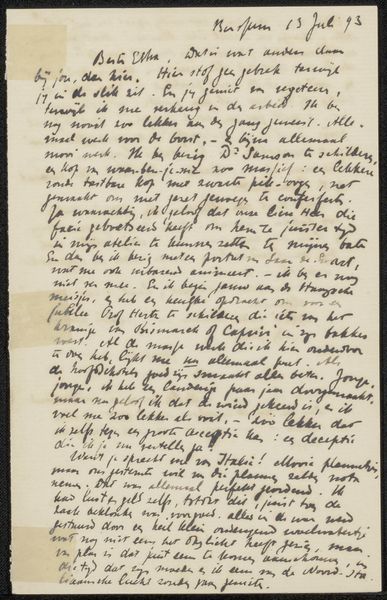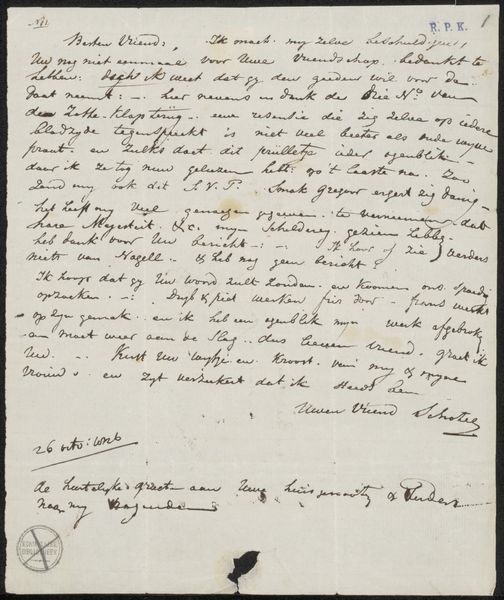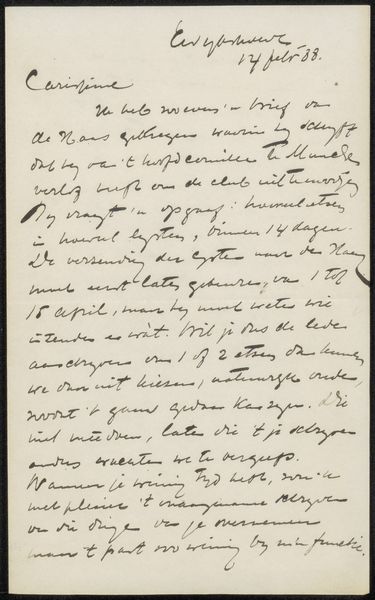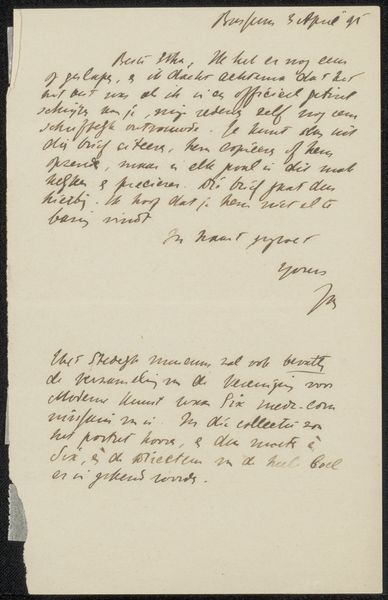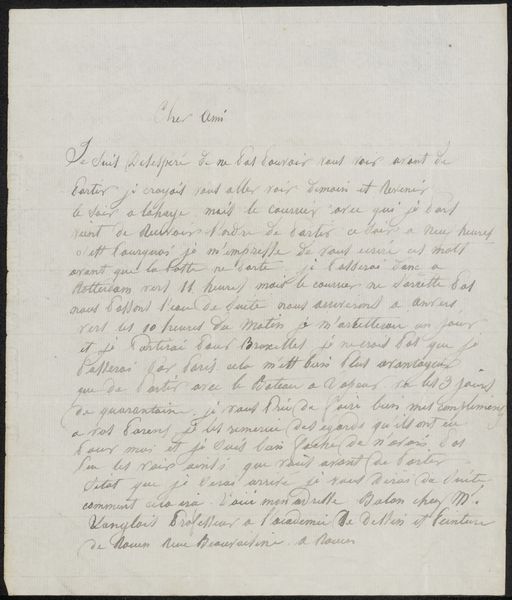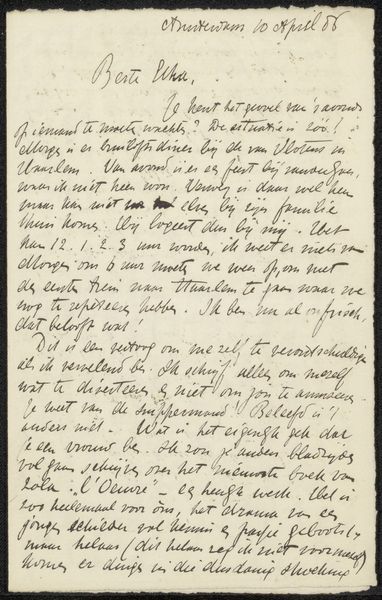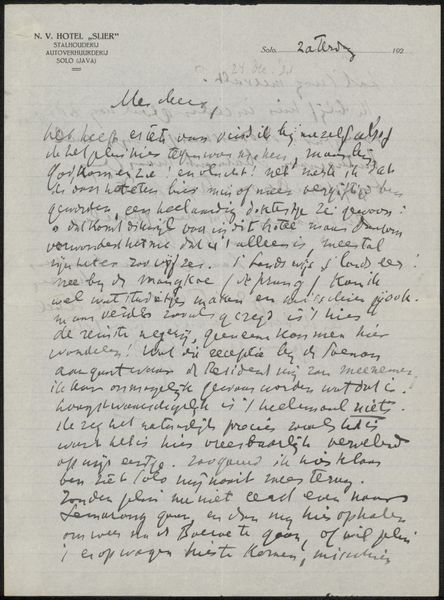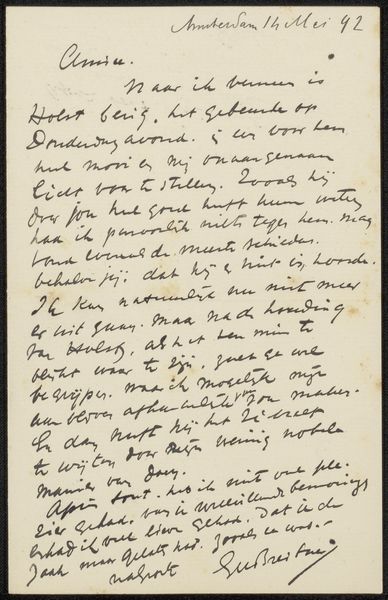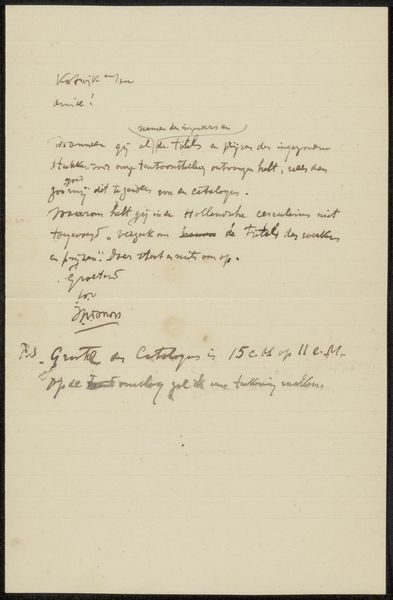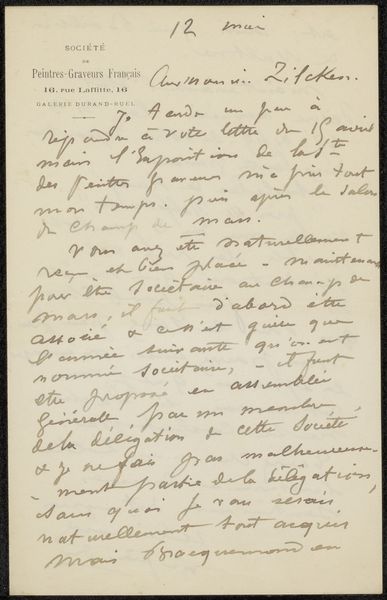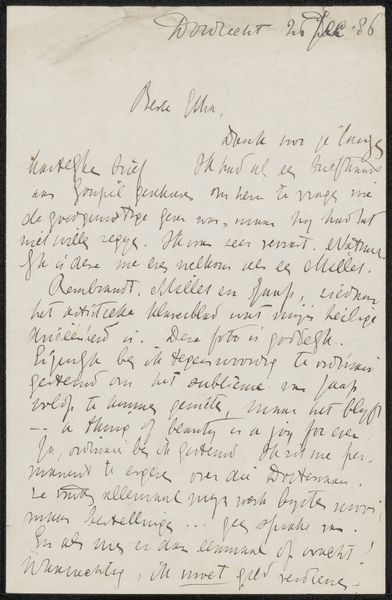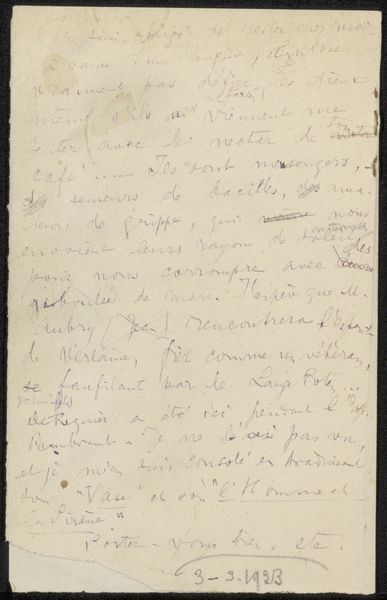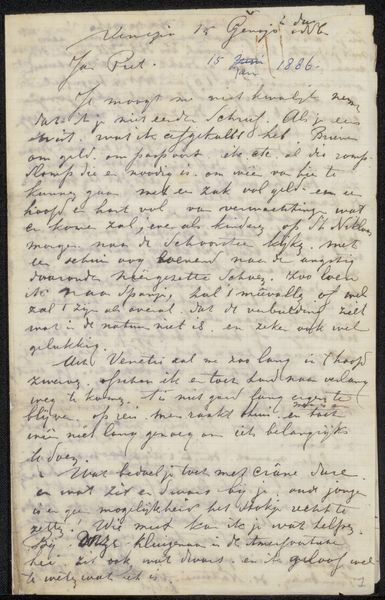
Copyright: Rijks Museum: Open Domain
Editor: This is a drawing titled "Brief aan L. van den Broeke," possibly created between 1917 and 1928 by Jan Toorop. It's ink on paper and housed in the Rijksmuseum. It's basically a handwritten letter, isn't it? I'm curious; what do you make of displaying a letter as a piece of art? Curator: Precisely. Presenting a personal letter within a museum context transforms its significance. Historically, the rise of the public museum in the 19th and early 20th centuries saw the elevation of everyday objects to artifacts worthy of study and display. What was private becomes public. This letter, penned by Toorop, gives us insight into the artist's thoughts and social circle. Editor: So, the letter itself becomes a kind of primary source, revealing information beyond its immediate message. Curator: Absolutely. To whom was he writing, and what social circles were being reflected in this "friendly writing"? The act of writing and preserving letters held a different cultural weight then as well. Can we reconstruct what art world context made Toorop think this person should be contacted, and in what tone? It's also fascinating that the museum chose *this* to display from all possibilities. What kind of statement does the Rijksmuseum make by presenting this intimate correspondence as a cultural object? Editor: I hadn't thought about it that way. It really encourages one to consider the choices behind museum display, and their underlying meanings. Thanks for broadening my understanding. Curator: Indeed. Considering the letter’s socio-historical position highlights the dynamic between personal expression and institutional validation. Ultimately, studying what has been chosen to be memorialized, over everything else, is vital to understand art.
Comments
No comments
Be the first to comment and join the conversation on the ultimate creative platform.
